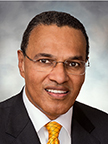
This week in education news, NGSS’ next big challenge…finding curricula; Girl Scouts 23 new STEM badges; school success stops and ends with teachers; new report finds science teachers are often expected to teach beyond their subject matter training; New York school district to send science experiment to space; Trump Administration ask Tech CEOs for STEM policy advice; President Trump donates his second-quarter salary to education department; schools need to do more to equip K-12 students with computational thinking skills; Colorado adopts STEM seals for high school diplomas; and Alabama Governor Kay Ivey unveiled a new education initiative.
The Next Generation Science Standards’ Next Big Challenge: Finding Curricula
As states wrestle with putting the Next Generation Science Standards into action, one question I’m hearing more and more: What to do about curriculum? It’s also a question that’s been on the mind of the Carnegie Corporation of New York, which provided major support to the groups that developed the framework and standards that evolved into the NGSS. Click here to read the article featured in Education Week.
Together, Technology And Teachers Can Revamp Schools
In 1953 B.F. Skinner built his first “teaching machine”, which let children tackle questions at their own pace. By the mid-1960s similar gizmos were being flogged by door-to-door salesmen. Within a few years, though, enthusiasm for them had fizzled out. Since then education technology (edtech) has repeated the cycle of hype and flop, even as computers have reshaped almost every other part of life. One reason is the conservatism of teachers and their unions. But another is that the brain-stretching potential of edtech has remained unproven. Click here to read the article featured in The Economist.
Girl Scouts Adds 23 New Badges To Encourage Girls In Science, Tech
Girl Scouts can now earn badges in designing robots and coding in addition to legacy badges of first-aid and hiking. Is there anything these girls can’t do? The Girl Scouts of the USA announced Tuesday the addition of 23 new badges in the Science, Technology, Engineering and Math (STEM) fields. The move marks the largest programming rollout in almost a decade. Click here to read the article featured in USA Today.
Trump Budget Endangers STEM Learning
Any observant educator knows that after-school and summer learning opportunities are critical elements of a great education, helping students to succeed in school, work, and life. President Donald Trump’s proposed federal budget for fiscal 2018 would eliminate the single largest funding source for these programs: an annual $1.2 billion for after-school programs supported by the 21st Century Community Learning Centers program, which enrolls more than 1 million students across rural, urban, and suburban communities in all 50 states. But the damage wouldn’t stop there. Click here to read the article featured in Education Week.
District Chief: Why School Success Stops And Ends With Teachers
I believe the hardest day of any job is the very first day. On that first day, the basic, most elementary parts of the workplace are foreign. Where do I park? Where is the coffee? How do I log in to my new computer? The list of things to learn goes on and on. However, a new job also brings tremendous opportunity. Click here to read the article featured in eSchool News.
Study Shows Science Teachers Often Teach Beyond Their Training
A new study from researchers at Brigham Young University and the University of Georgia shows that new science teachers are often expected to teach beyond their subject matter training. College students training to be middle or high school science teachers, often choose a subject, like biology, chemistry or physics. They then take the necessary classes to specialize in that subject area so they can achieve a “highly qualified” teacher status. But, the majority of new science teachers across the country, 64 percent, are asked to teach more than their area of expertise. Click here to listen to the segment on KUER-FM.
Prepping Students For Future Computer Science Jobs
The economy is rapidly feeling the impact of advanced technologies such as artificial intelligence, which allows computers to make decisions, recognize speech and perform other traditionally “human” tasks. Nearly half of all jobs in the U.S. in the next 10 to 20 years will be related to AI, according to a 2016 Obama administration report, “Artificial Intelligence, Automation, and the Economy.” But the quality of computer science education varies widely across the country. Click here to read the article featured in District Administration.
Rochester City School District To Send Science Experiment To Space
Rochester, New York, students have some bragging rights when it comes to space exploration. East High School students in the Rochester City School District recently earned the opportunity to send their microgravity experiment to the International Space Station. The experiment—which tests the role of microgravity in the production of chlorophyll—is one of 21 student projects that will launch from Cape Canaveral in Florida this month. Click here to read the article featured in District Administration.
Trump Administration Tapping Tech CEOs For STEM Policy Approach
White House officials including Ivanka Trump have begun an outreach campaign to major technology, business and education leaders including Laurene Powell Jobs and Apple’s Tim Cook for advice on shaping funding approaches to science, technology, engineering and math education in U.S. public schools. Click here to read the article featured on Bloomberg.com
The Next Big Thing in Education Reform May Be Practice, Not Policy
The era of hyperactive education policymaking is about to come to an end. That might be hard to believe, given this summer’s high-decibel policy disputes, both in Washington and in the states. The implementation of the Every Student Succeeds Act (ESSA); debates about a potential large-scale federal school-choice initiative; and deep disagreements about civil rights enforcement continue to captivate—and roil—all of us involved in education policy, in D.C. and around the nation. Click here to read the article featured in Education Next.
Trump Donates $100,000 — His Second-Quarter Salary — To Education Department For Science Camp
Education Secretary Betsy DeVos announced at the White House on Wednesday that President Trump was donating $100,000, his salary for the second quarter of the year, to the Education Department to help fund a science camp. Click here to read the article featured in The Washington Post.
Congressional Panel Asks: What K-12 Skills Are Needed For STEM Workforce?
Schools need to do more to equip K-12 students with computational thinking skills to prepare them to fill the growing number of middle- and high-skilled jobs that require computing or programming skills, witnesses told members of a congressional committee this week. The STEM workforce is rapidly changing, said James Brown, the executive director of the STEM Education Coalition, a STEM education advocacy group. Click here to read the article featured in Education Week.
From Skyhook To STEM: Kareem Abdul Jabbar Brings The Science
Kareem Abdul Jabbar is taking his shot helping narrow the opportunity and equity gaps with his Skyhook Foundation and Camp Skyhook. The Los Angeles nonprofit helps public school students in the city access a free, fun, week-long STEM education camp experience in the Angeles National Forest. Click here to listen to the segment featured on NPR.
State Adopt STEM Seals For High School Diplomas
Colorado educators Elaine Menardi and Jess Buller would seem an unlikely pair to be writing legislation. But neither felt that their students, then middle schoolers, were on track for meeting state benchmarks for workforce readiness in technology and computing. So, while participating in a fellowship together, the two cooked up a solution: a STEM diploma endorsement awarded to high school students with a track record of strong achievement in those subjects. Click here to read the article featured in Education Week.
Alabama Gov. Kay Ivey Unveils First Big Issue Important To Her: Education
Gov. Kay Ivey unveiled a new education initiative on Wednesday, focusing on three stages of education: early childhood, computer science in middle and high school, and post-high school workforce preparedness. Calling this her first formal initiative as Governor of Alabama, Ivey said “Strong Start, Strong Finish” calls for various existing education groups to work together in a collaborative way from pre-kindergarten through workforce development. Click here to read the article featured on Al.com.
Stay tuned for next week’s top education news stories.
The Communication, Legislative & Public Affairs (CLPA) team strives to keep NSTA members, teachers, science education leaders, and the general public informed about NSTA programs, products, and services and key science education issues and legislation. In the association’s role as the national voice for science education, its CLPA team actively promotes NSTA’s positions on science education issues and communicates key NSTA messages to essential audiences.
The mission of NSTA is to promote excellence and innovation in science teaching and learning for all.
Follow NSTA



 General session speaker Freeman A. Hrabowski, president of UMBC (University of Maryland, Baltimore County), will kick off the conference with “Holding Fast to Dreams: Creating a Culture of STEMSuccess,” on Thursday, October 5 9:15 AM – 10:30 AM, in the Baltimore Convention Center, Ballroom III/IV. Join Hrabowski as he shares innovative approaches to STEM teaching and learning, STEM teacher preparation, support for the growing population of diverse students who must participate and succeed in these fields, and the importance of partnerships between schools, universities, philanthropy, government agencies, and business.
General session speaker Freeman A. Hrabowski, president of UMBC (University of Maryland, Baltimore County), will kick off the conference with “Holding Fast to Dreams: Creating a Culture of STEMSuccess,” on Thursday, October 5 9:15 AM – 10:30 AM, in the Baltimore Convention Center, Ballroom III/IV. Join Hrabowski as he shares innovative approaches to STEM teaching and learning, STEM teacher preparation, support for the growing population of diverse students who must participate and succeed in these fields, and the importance of partnerships between schools, universities, philanthropy, government agencies, and business.

